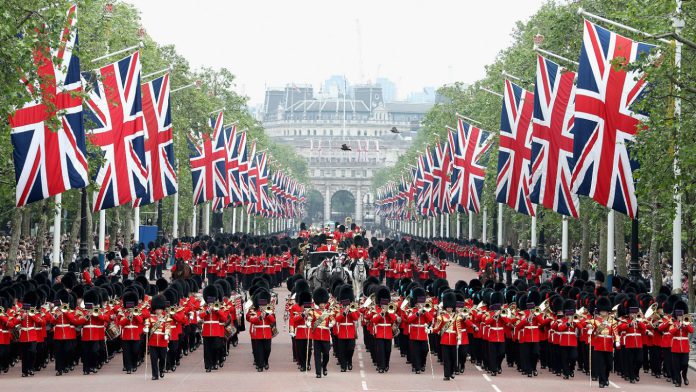So, basically a colossal birthday party for the Queen?” asked Catherine as she browsed through a book.
“Well, not just that, you know. There’s a lot more to it,” replied Jay, a little confused.
“The look you wear on your face, says quite the contrary,” smirked Catherine, rather sarcastically.
She was really looking forward to know more about this day called the ‘Trooping The Colour’. From the pictures the event looked vibrant, and something told her that the day wasn’t confined to the Queen of England’s Birthday celebration alone. Catherine was determined to know what secrets this day held. She wanted to soak into the beauty of the vibrancy of the experience that ‘Trooping The Colour’ is. She headed straight to her mother’s library and began to pull out editions of the distinct books until she found a story that told her exactly what she had wanted to know. Catherine found the title for the story a little odd, but soon understood that this tradition goes way back came to prominence in the eighteenth century. Those were the days of land warfare, and battalions used brightly coloured flags in order for them to be visible in the dust clouds of the battle. In a marching ceremony at the end of the day, the colours were customarily carried down the ranks, and kept at the emergency meeting point of the battalion during the night.
What had looked like an arbitrary use of colours until now, had begun to make sense to Catherine. She thought to herself, “An entire marching ceremony, in order to familiarize soldiers with the coloured flags of his unit and the emergency meeting point.” It was more fascinating than she had thought. She read on, only to discover that as times changed while the ceremony continued with the same pomp and show, the colour trooped today is only the Queen’s colour.
She got the most impressive display of military ceremonial that London witnesses every year. As the event marked the Queen’s official birthday 1748, it came to be known as the Queen’s Birthday Parade. Charlotte of Mecklenburg-Strelitz was the first ever Queen of Great Britain, whose birthday celebrations transcended into the royal ceremony. An amateur botanist, Queen Charlotte was a lover and patron of the arts. A mother of fifteen children, she held a great interest in Kew Gardens. Owing to her love for botany, the South African flower, the Bird of Paradise was named Strelitzia reginae, in order to honour her.





